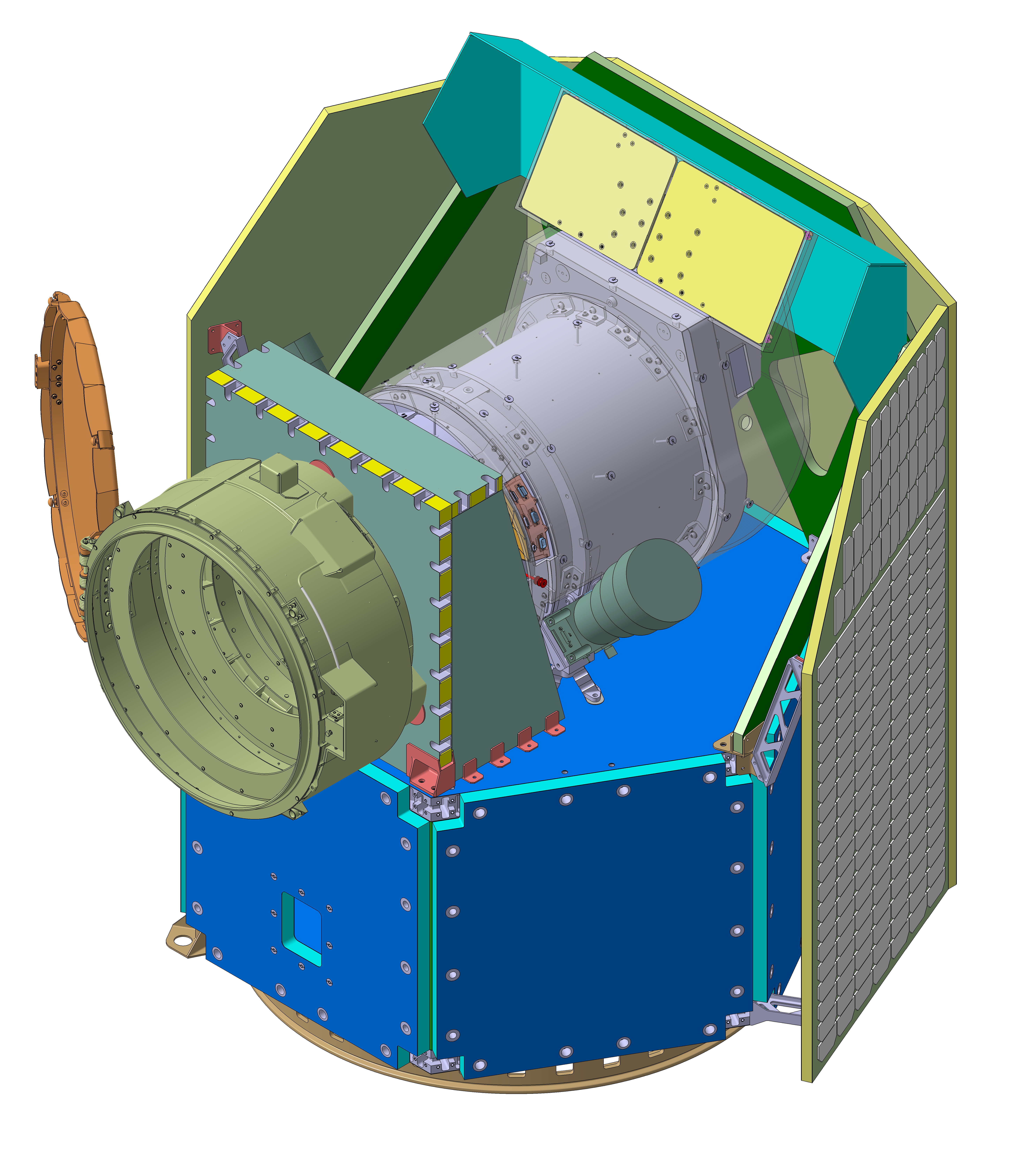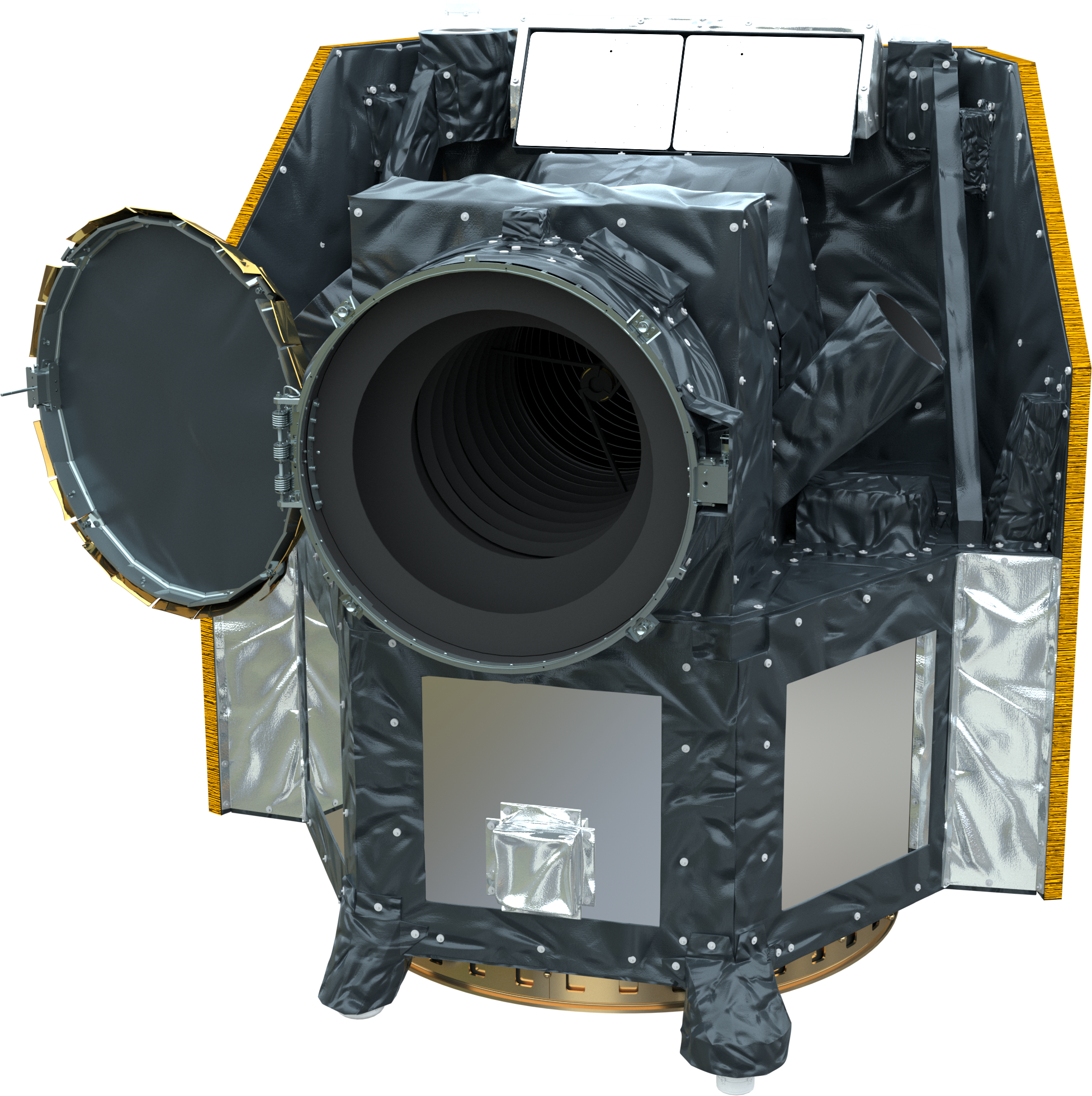Spacecraft
The platform for CHEOPS is provided by EADS CASA Espacio based on the SEOSAT platform. This section briefly outlines the major platform requirements.
The CHEOPS mission is flying a single medium-size telescope (30 cm aperture, 1.2 length including baffle). All platform requirements are aimed at supporting the functionality of the telescope and its ultrahigh photometric precision. The main implications for the platform are related to pointing capabilities and thermal environment for the payload.
The telescope will be mounted on a stiff optical bench which defines the interface to the platform. It shall be thermally decoupled. A sun shield mounted on the platform protects the radiator and detector housing against the sun and also contains solar panels for the energy and power subsystem. The satellite has dimensions of approx. 1.5 x 1.5 x 1.5 m and a hexagonal base structure. The sun-shield wraps around the hexagon, see the following figure.
This picture shows the accommodation of the instrument on the spacecraft.
 CAD model of the final design.
CAD model of the final design.
 Artist rendering of the fully integrated spacecraft (courtesy of ESA)
Artist rendering of the fully integrated spacecraft (courtesy of ESA)
Requirements
The major requirement toward the spacecraft is that it must be capable to point the telescope at the target object with sufficient precision. Movement of the target image on the detector shall be minimized and stay within strict bounds. This is the major design driver for the attitude and orbit control system.
Attitude and orbit control system (AOCS) / Pointing stability: The S/C shall be 3-axis stabilized but nadir locked. Pointing stability requirements derive from the flat field variation of the instrument noise budget. To minimize image jitter and therefore noise due to pixel-to-pixel variations, the AOCS shall maintain the pointing stability to better than 4 arc sec rms during a 10 hour science observation. The goal is to reach 1 arcsec pointing stability which would provide some margin for the required pixel-to-pixel calibration and it may allow a reduction of the size of the PSF, reducing the impact of stray light. The typical observation duration will be 48 hours. The AOCS will ensure that one of the spacecraft axes is always pointing towards the Earth. This nadir locked orientation implies that the spacecraft makes one rotation about its boresight axis once per orbit and guarantees that the telescope radiator always points towards cold space.
Next to this major design driver the following additional requirements have to be satisfied.
Thermal stability: The platform shall provide the thermal environment that allows the payload to thermally stabilize the detector. Our approach is to use a sun shield (similar to that used for the Odin mission) that prevents direct sunlight on the payload for most orientations. Only the forebaffle shall be illuminated by direct sunlight. This also minimises disturbances in the radiator environment. Payload and platform shall be thermally decoupled.
Power: The spacecraft shall provide 60W continuous power for instrument operations. The CHEOPS satellite will have solar panels integrated with the sun shield. The panels in combination with the battery provide adequate power for the payload and data downlink duty cycle including when the spacecraft is in eclipse. Power of over 70W can be provided to the instrument for short periods.
Data: The spacecraft shall provide at least 1.2 GBit/day downlink for the payload.